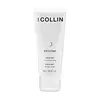What's inside
What's inside
 Key Ingredients
Key Ingredients

 Benefits
Benefits

 Concerns
Concerns

 Ingredients Side-by-side
Ingredients Side-by-side

Water
Skin ConditioningCyclohexasiloxane
EmollientGlycerin
HumectantAlcohol Denat.
AntimicrobialHydroxypropyl Tetrahydropyrantriol
Skin ConditioningPropylene Glycol
HumectantDipotassium Glycyrrhizate
HumectantPolysilicone-11
Polymethylsilsesquioxane
Sodium Hyaluronate
HumectantDimethicone
EmollientTocopherol
AntioxidantPhenoxyethanol
PreservativeCapryloyl Salicylic Acid
ExfoliatingOctyldodecanol
EmollientBis-PEG/PPG-16/16 PEG/PPG-16/16 Dimethicone
EmollientPEG-20 Methyl Glucose Sesquistearate
EmulsifyingAmmonium Polyacryloyldimethyl Taurate
Emulsion StabilisingCaprylyl Glycol
EmollientXanthan Gum
EmulsifyingDextrin
AbsorbentOryza Sativa Extract
AbsorbentDisodium EDTA
Caprylic/Capric Triglyceride
MaskingSodium Hydroxide
BufferingAdenosine
Skin ConditioningCitrus Nobilis Peel Oil
MaskingLimonene
PerfumingT-Butyl Alcohol
PerfumingCellulose Acetate Butyrate
Polyphosphorylcholine Glycol Acrylate
Polyvinyl Alcohol
Sodium Chloride
MaskingButylene Glycol
HumectantPentaerythrityl Tetra-Di-T-Butyl Hydroxyhydrocinnamate
AntioxidantWater, Cyclohexasiloxane, Glycerin, Alcohol Denat., Hydroxypropyl Tetrahydropyrantriol, Propylene Glycol, Dipotassium Glycyrrhizate, Polysilicone-11, Polymethylsilsesquioxane, Sodium Hyaluronate, Dimethicone, Tocopherol, Phenoxyethanol, Capryloyl Salicylic Acid, Octyldodecanol, Bis-PEG/PPG-16/16 PEG/PPG-16/16 Dimethicone, PEG-20 Methyl Glucose Sesquistearate, Ammonium Polyacryloyldimethyl Taurate, Caprylyl Glycol, Xanthan Gum, Dextrin, Oryza Sativa Extract, Disodium EDTA, Caprylic/Capric Triglyceride, Sodium Hydroxide, Adenosine, Citrus Nobilis Peel Oil, Limonene, T-Butyl Alcohol, Cellulose Acetate Butyrate, Polyphosphorylcholine Glycol Acrylate, Polyvinyl Alcohol, Sodium Chloride, Butylene Glycol, Pentaerythrityl Tetra-Di-T-Butyl Hydroxyhydrocinnamate
Water
Skin ConditioningKaolin
AbrasiveBentonite
AbsorbentZinc Oxide
Cosmetic ColorantPEG-7 Glyceryl Cocoate
EmulsifyingCetearyl Alcohol
EmollientCeteareth-20
CleansingPEG-100 Stearate
Glyceryl Stearate
EmollientButylene Glycol
HumectantGlycerin
HumectantSimmondsia Chinensis Seed Oil
EmollientTitanium Dioxide
Cosmetic ColorantMagnesium Carbonate
AbsorbentCitrus Limon Peel Oil
MaskingMentha Arvensis Herb Oil
PerfumingSilica
AbrasiveProtease
ExfoliatingMagnesium Aluminum Silicate
AbsorbentCellulose Gum
Emulsion StabilisingPropylene Glycol
HumectantDiazolidinyl Urea
PreservativeMethylparaben
PreservativePropylparaben
PreservativeCitric Acid
BufferingBHA
AntioxidantWater, Kaolin, Bentonite, Zinc Oxide, PEG-7 Glyceryl Cocoate, Cetearyl Alcohol, Ceteareth-20, PEG-100 Stearate, Glyceryl Stearate, Butylene Glycol, Glycerin, Simmondsia Chinensis Seed Oil, Titanium Dioxide, Magnesium Carbonate, Citrus Limon Peel Oil, Mentha Arvensis Herb Oil, Silica, Protease, Magnesium Aluminum Silicate, Cellulose Gum, Propylene Glycol, Diazolidinyl Urea, Methylparaben, Propylparaben, Citric Acid, BHA
 Reviews
Reviews

Ingredients Explained
These ingredients are found in both products.
Ingredients higher up in an ingredient list are typically present in a larger amount.
Butylene Glycol (or BG) is used within cosmetic products for a few different reasons:
Overall, Butylene Glycol is a safe and well-rounded ingredient that works well with other ingredients.
Though this ingredient works well with most skin types, some people with sensitive skin may experience a reaction such as allergic rashes, closed comedones, or itchiness.
Learn more about Butylene GlycolGlycerin is already naturally found in your skin. It helps moisturize and protect your skin.
A study from 2016 found glycerin to be more effective as a humectant than AHAs and hyaluronic acid.
As a humectant, it helps the skin stay hydrated by pulling moisture to your skin. The low molecular weight of glycerin allows it to pull moisture into the deeper layers of your skin.
Hydrated skin improves your skin barrier; Your skin barrier helps protect against irritants and bacteria.
Glycerin has also been found to have antimicrobial and antiviral properties. Due to these properties, glycerin is often used in wound and burn treatments.
In cosmetics, glycerin is usually derived from plants such as soybean or palm. However, it can also be sourced from animals, such as tallow or animal fat.
This ingredient is organic, colorless, odorless, and non-toxic.
Glycerin is the name for this ingredient in American English. British English uses Glycerol/Glycerine.
Learn more about GlycerinPropylene Glycol is an odorless, colorless liquid. As a humectant, it helps skin retain moisture. It also aids in delivering active ingredients.
Another role of this ingredient is preventing a product from melting or freezing. Propylene glycol also adds antimicrobrial properties to a product, elongating product lifespan.
This ingredient is considered an organic alcohol and commonly added into both cosmetics and foods.
Those with sensitive skin or conditions may develop a rash when using this ingredient.
Learn more about Propylene GlycolWater. It's the most common cosmetic ingredient of all. You'll usually see it at the top of ingredient lists, meaning that it makes up the largest part of the product.
So why is it so popular? Water most often acts as a solvent - this means that it helps dissolve other ingredients into the formulation.
You'll also recognize water as that liquid we all need to stay alive. If you see this, drink a glass of water. Stay hydrated!
Learn more about Water